03/11/2023 | Maria Adelaide Marchesoni
MER Collection, the story of a journey into an unknown landscape
The MER collection of Marcos Martin Blanco and Elena Rueda Rodriguez has no particular focus, it does not follow a chronological order but is the result of the relationships established with artists and galleries over the years
The MER Collection (initials of Marcos, Elena, and son Rafael) is a contemporary art collection which was initiated in Spain forty years ago and now has about 800 works by 180 artists, both Spanish and foreign, including the most representative examples of Spanish abstraction of the 1980s and the new American figuration. Awarded the prize dedicated to private collecting by the organizing Committee of Arco Madrid fair in 2004, it is considered one of the best contemporary art collections in Europe.
Fundación MER is negotiating with the Spanish Ministry of Culture and the City of Segovia for the restoration of the 12th-century deconsecrated church of San Pedro de los Picos in Segovia, which they own, to create a House-Museum in which visitors will be able to capture the emotion experienced with contemporary art by Elena and Marcos.
When and why did you start collecting?
It all begun when Gerardo Rueda, my mother Elena's cousin, the founder, together with Fernando Zóbel and Gustavo Torner, of the Museo de Arte Abstracto de las casas colgadas in Cuenca (Spain), and a famous designer in the 1970s, was involved in the renovation of the manor house that my parents had just renovated in the historic centre of Segovia. He brought his artworks and those of his contemporaries to hang on the walls, many of which were rejected by Elena and Marcos because they didn't like.
Conscious that Gerardo was a very cultured and exquisite person, they concluded that if they did not like his proposals, it was because they were uneducated. They therefore decided to dedicate one afternoon a week to visiting galleries, museums and exhibitions. After three years, their perspective changed and they learnt to appreciate art. Gerardo was their Pygmalion, the one who encouraged them to educate their eyes to art.
The Madrid-based gallery owner Soledad Lorenzo, with her programme of exhibitions with artists such as Julián Schnabel, George Condo, David Salle, Eric Fischl and others, was also fundamental to the education of our minds; María de Corral, who was Director of Visual Arts at the Fundación 'La Caixa' in Madrid and Barcelona, and later Director of the Reina Sofía Museum in Madrid, who introduced international contemporary art to Spain; and the artist Carlos León, whose works we bought, which enabled him to move to New York, where he lived for eight years. This gave Elena and Marcos the opportunity to make two trips a year to the Big Apple and to be privileged observers of the development of 'New American Figuration'.
My parents, Elena and Marcos, started collecting at the age of 50, when I was 18, which is why I have absorbed, enjoyed and given my opinion, in the conformation of the MER Collection since its origins. Until 2017, all final purchasing decisions were made by my father. Since then, the additions to the MER Collection have been decided by me.
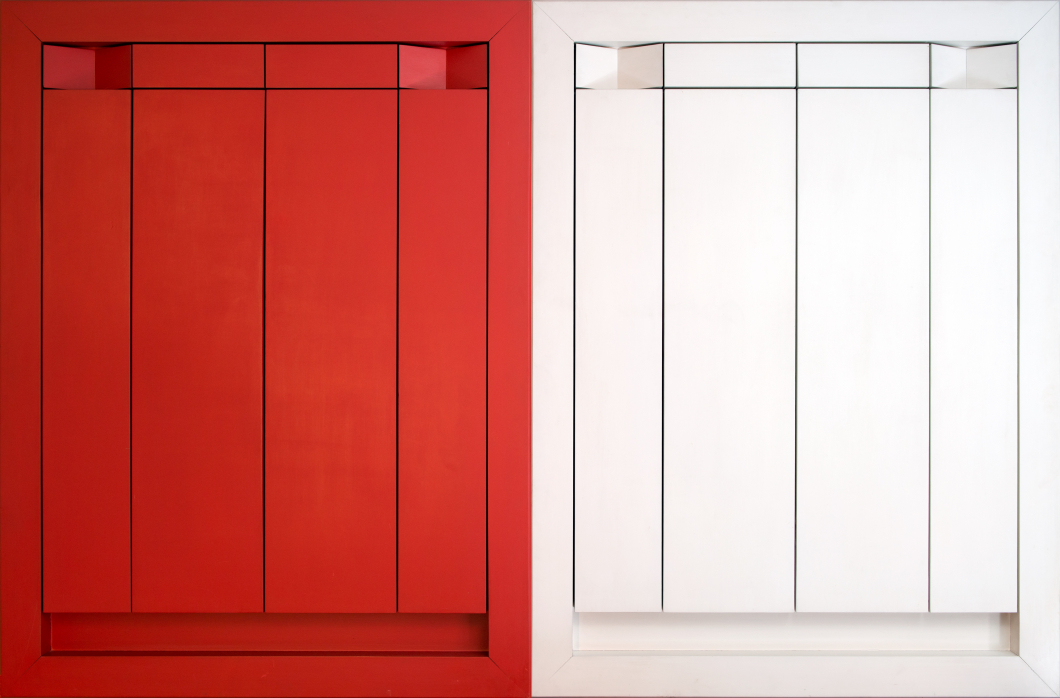
Gerardo Rueda (Spain) – “Ermitaño blanco-rojo”, 1972, oil on wood (diptych), 128 × 97 cm (each) © photo: Eduardo Domenech Serrano
Which artists in the collection: Spanish or foreign?
Painting is the most featured language in the collection (75%) followed by photography and video art from the last 40 years, with both domestic artists (45 %) and foreign artists (55%), mostly from the United States, Germany, and the United Kingdom, which together account for 35 % of the artists in the collection.
Domestic artists include Carlos León, Miquel Barceló, José María Sicilia, Juan Uslé, Victoria Civera, Pablo Palazuelo, Miguel Ángel Campano, Ferrán García Sevilla, Perejaume, Joan Hernández Pijuan, Soledad Sevilla, José Guerrero, Luis Gordillo, Gerardo Rueda, Guillermo Pérez Villalta, Jorge Galindo, Curro González, José Manuel Broto, Juan Navarro Baldeweg, Cristina García Rodero, Juan Muñoz, Txomin Badiola, and Zush.
Recent acquisitions include Daniel Canogar, La Ribot, David Oliver (Grip Face), Imon Boy, Sebas Velasco, GVIIIE, Alfonso del Moral, Didi Leona, and Javier Palacios.
Among foreign artists there are Eric Fischl, Marilyn Minter, David Salle, Julian Schnabel, George Condo, Francesco Clemente, Rainer Fetting, Helmut Middendorf, Stephan Balkenhol, Thomas Ruff, Lisa Yuscavage, Cindy Sherman, Andrés Serrano, Karen Kilimnik, John Currin, Jenny Saville, Marlene Dumas ó Lynnete Yiadom-Boakly. Among recent acquisitions, Bill Viola, Julian Rosenfeld, Jenna Gribbon, Chloe Wise, Mario Joyce, Gisella McDaniel, Federico Solmi, Hugo Crosthwaite, Rebeca Morgan, Zak Smith, Horacio Quiroz, Raymond Lemstra, Kang Haoxian, Julius Hofmann, Rachel Hobkirk, Kyle Dunn, Isaac Escoto, Hiroshima Shinkichi, Willehad Eilers o Lu Yang.
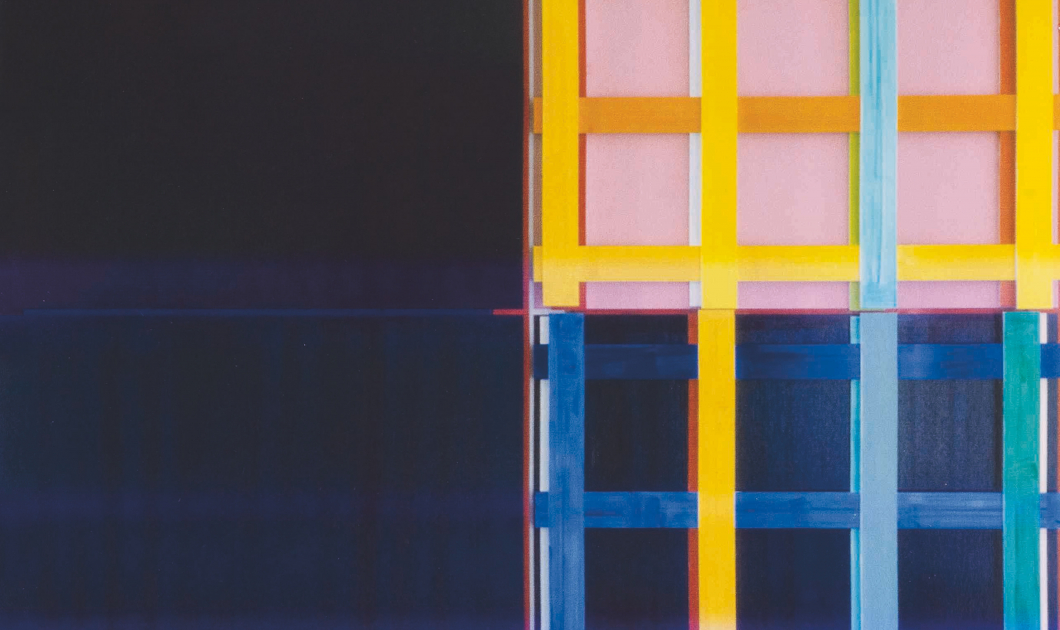
Imi KNOEBEL (Germany) – “Nonnoa”, 2002, acrylic on aluminum, 307 × 307 × 11 cm © photo: Imi Knoebel & Galería Helga de Alvear
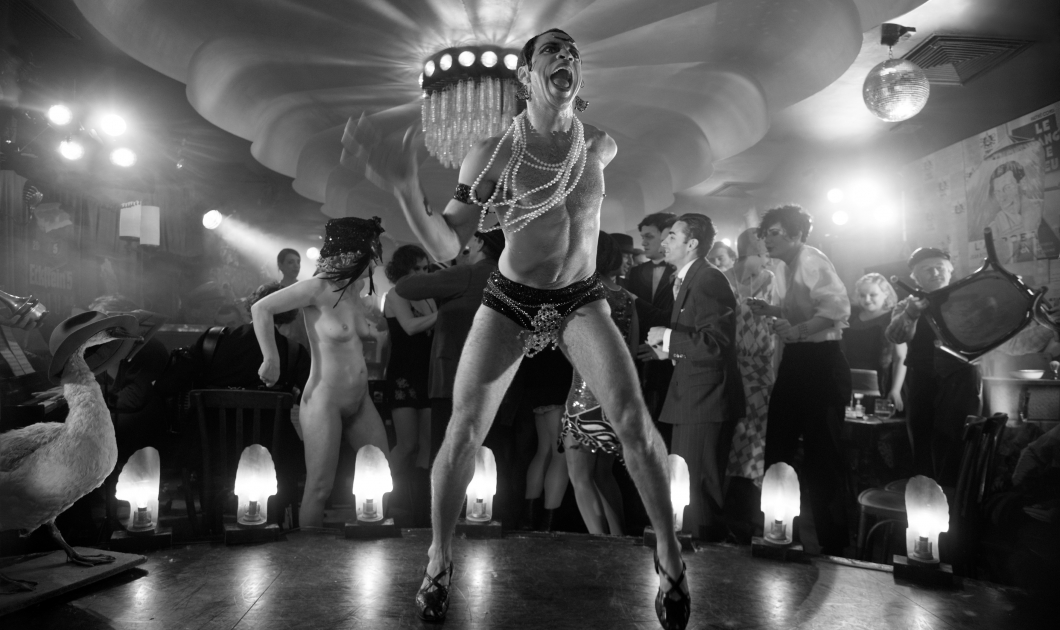
Julian Rosenfeldt (Germany) – “Deep Gold”, 2014, video & audio, shot on HD, transferred onto hard disc (edition 3/6 + 2 AP), 18’12’’ © photo: Julian Rosenfeldt & Galería Helga de Alvear
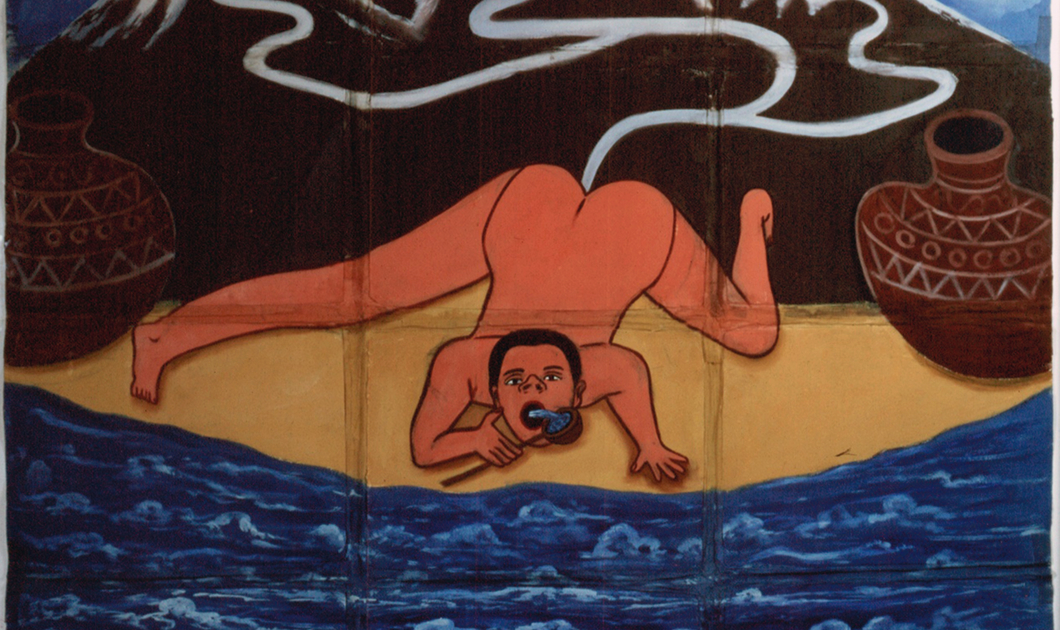
Francesco CLEMENTE (Italy) – “Al mare o in montagna”, 1981, gouache on paper 239 × 239 cm © photo: Christie’s
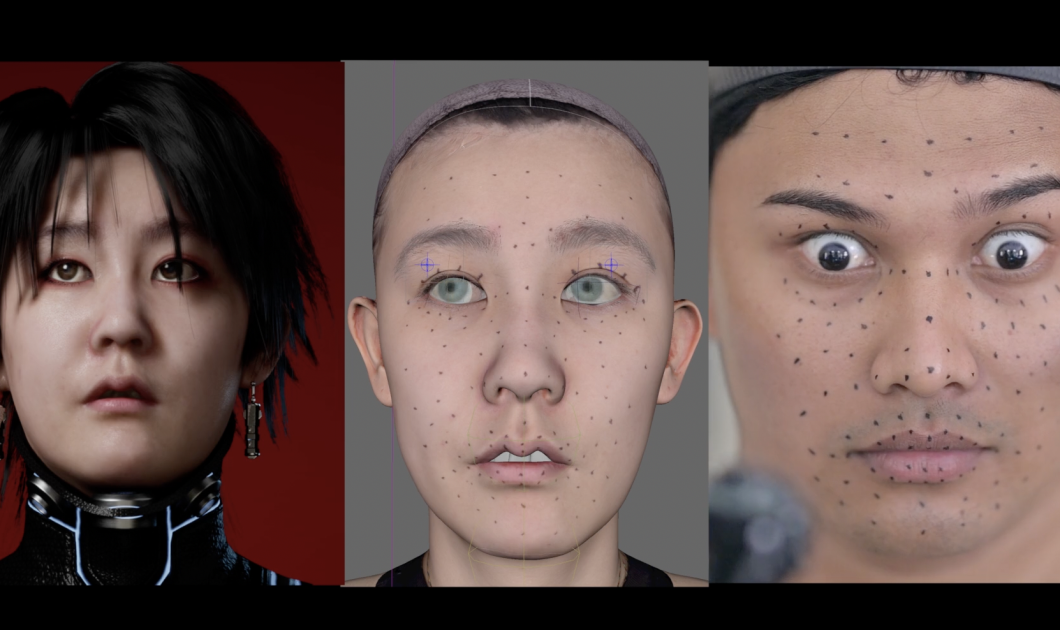
Lu YANG (China) – “Doku Facial Capture”, 2022, single-channel video (edition 1/3), 3’02’’ © photo: Lu Yang & Societé Gallery

David Salle (U.S.A.) – “Drink”, 1995, oil and acrylic on canvas, 183 × 274 cm © photo: Eduardo Domenech Serrano
The focus of your collection, if any?
Elena and Marcos started collecting contemporary Spanish art in the 1980s, in a cultural context characterised by the emergence of new artistic movements. Their preferences were clear from the beginning, with a strong interest in painting, although later the MER Collection expanded to include other techniques such as drawing, photography, and some occasional incursions into video.
The works that today are part of the MER Collection have been collected on the basis of freedom of personal decision guided by notions of quality, purchase opportunity, and aesthetic enjoyment. The views of art-world experts such as María de Corral, Lorena M. de Corral & Cecilia Pereira, Carlos Leon, and others have brought out the fact that in the MER Collection, there is no room for academic, historicist pretensions or forced objectivity. It does not follow a theme or chronology but focuses on the relationships established as the Collection expands. It does not respond to a single vision, nor a straight order, but rather represents a grouping of works that, as a whole, are capable of generating multiple readings, moving away from a firmly structured set. The affinities between the artworks, being visual, conceptual, ideological, historical, or simply coincidental, create an ongoing expanding network of ideas.
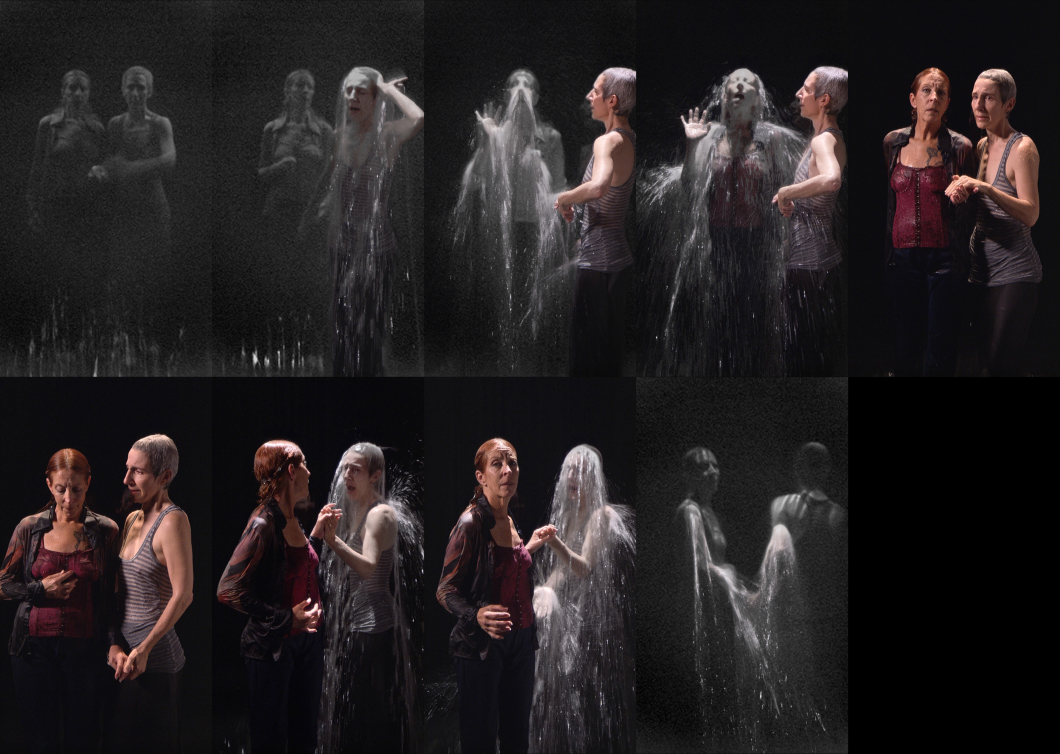
Bill Viola (U.S.A.) – “Visitation”, 2008, color high-definition video on flat panel display mounted vertically on wall (AP 2), 12’18’’ © photo: Bill Viola
The artistic language you are most passionate?
I have no preference for one language rather than another. I am fascinated by all of them and I am interested in getting to know them all. However, for me, when it is a matter of making an acquisition decision, it is crucial that new acquisitions dialogue with existing ones, which is exciting but at the same time influences you and makes you less free.
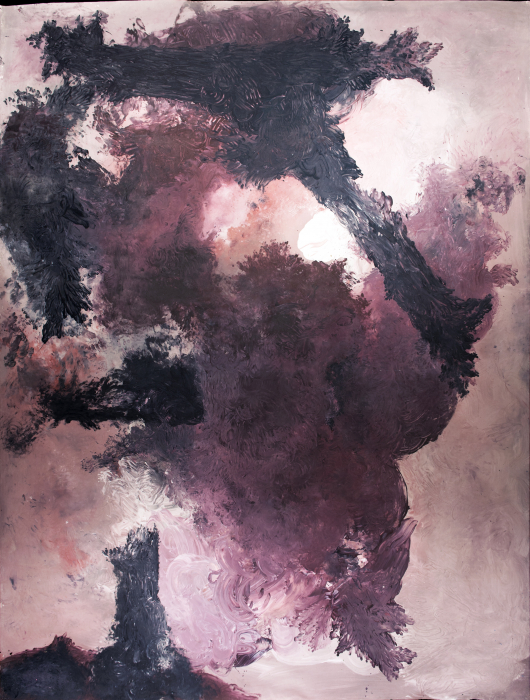
Carlos León (Spain) – “Barros y alquitrán II”, 2000, acrylic on canvas, 325 × 252 cm © photo: Eduardo Domenech Serrano
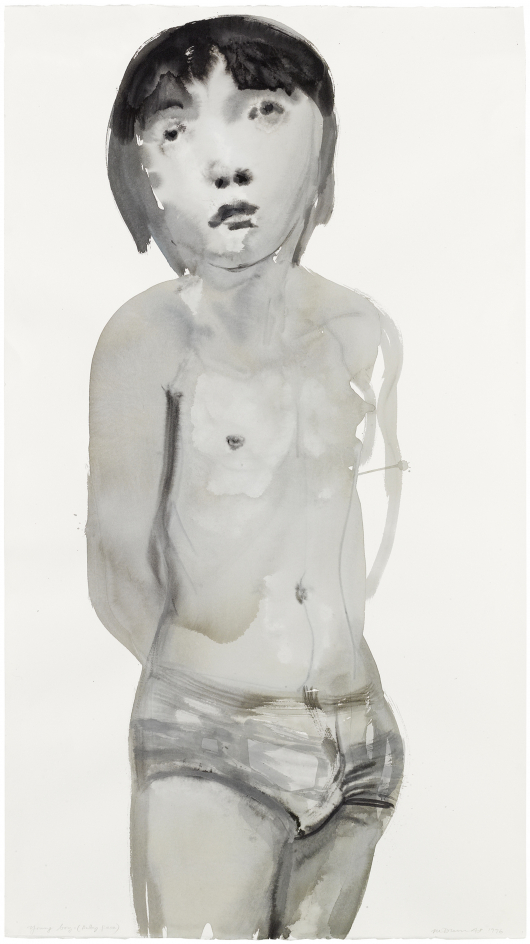
Marlene Dumas (South Africa) – “Young Boy (Baby Face)”, 1996, ink wash and crayon on paper, 125 × 70 cm © photo: Sotherby’s
Has the focus changed over time?
The MER Collection includes both abstraction and figuration. Over the years, a group of figurative works has taken shape whose main focus is the representation of the human body made according to new criteria and approaches that consider the movements that have occurred in the perception of these themes in today's society.
The recently acquired works dialogue with and enrich the collection formed by my parents, focusing on the part related to the body figuration and the different representations of the "desire."
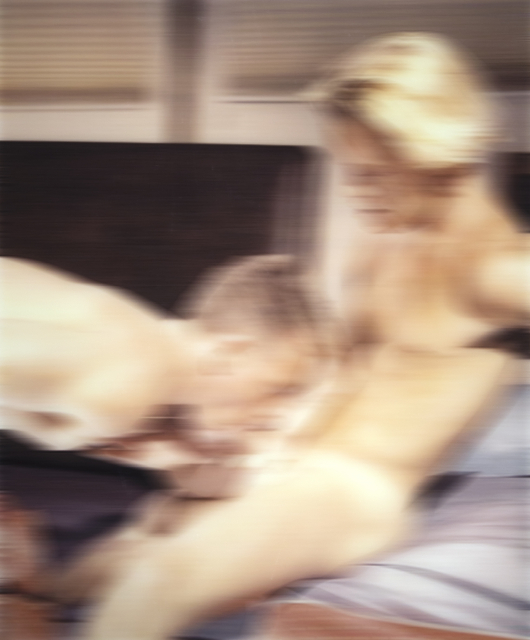
Thomas Ruff (Germany) – “Nudes go21”, 2000, laserchrome and Diasec on cardboard (edition 2/5), 140 × 120 cm © photo: Eduardo Domenech Serrano
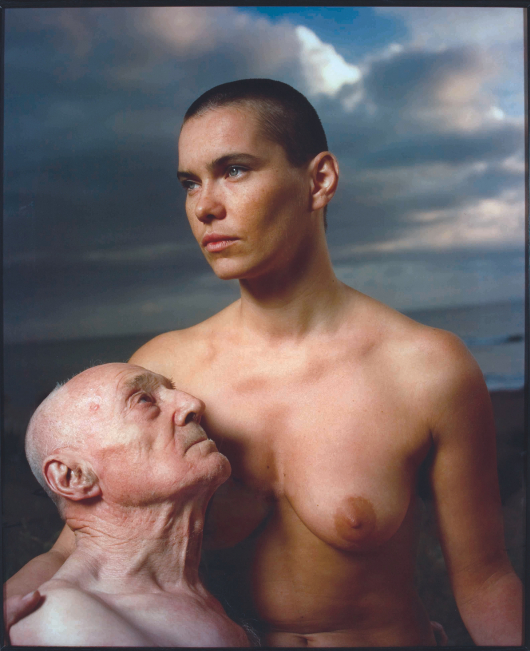
Andrés Serrano (U.S.A.) – “A History of Sex (Antonio y Ulrike)”, 1995, cibachrome, silicone on methyl methacrylate (edition 1/7), 101 × 82 cm © photo: Eduardo Domenech Serrano
What does "collecting" mean to you?
Collecting is a commitment and, at the same time, a pleasure to keep the MER Collection, one of the most significant private collections in Europe, international, important and timely.
With whom do you share the passion?
I share the passion for art with my partner, Eduardo Doménech. Eduardo is a professional photographer and collector. Despite his limited financial resources, he has managed to build, by his own resources and in less than five years, a collection of about 40 works. Thanks to his keen eye for contemporary art, he is an advisor to the MER Foundation and serves as an art consultant. Eduardo and I usually make 4 or 5 trips a year dedicated to art, visiting galleries, museums, collections and fairs around the world.
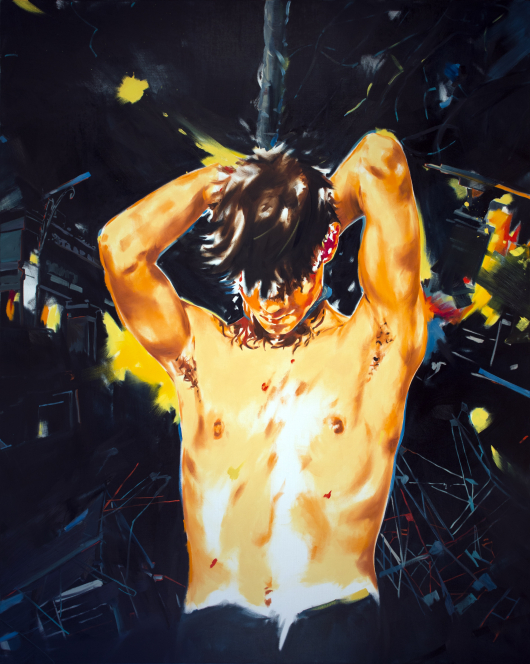
Norbert Bisky (Germany) – “Nefasto”, 2008, oil on canvas, 250 × 200 cm © photo: Eduardo Domenech Serrano
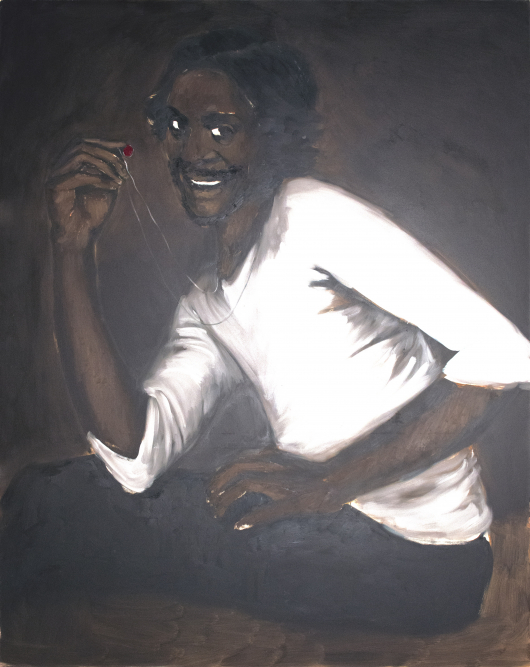
Lynette Yiadom-Boakye (U.K.) – “Bound Over to Keep the Peace”, 2012, oil on canvas, 250 × 200 cm © photo: Eduardo Domenech Serrano
Do you enjoy sharing the passion for art with other collectors?
Yes, I really enjoy seeing other collectors' art collections. More than economic standing, the collections reflect the way they see art and their connection to other personal or professional issues in their lives, which makes them fascinating. We also like to show the MER Collection to everyone involved in the art system: collectors, artists, gallerists, curators, other cultural professionals, and people from other business areas. It is always a pleasure to discover something new in the works of our collection through the eyes of the others.
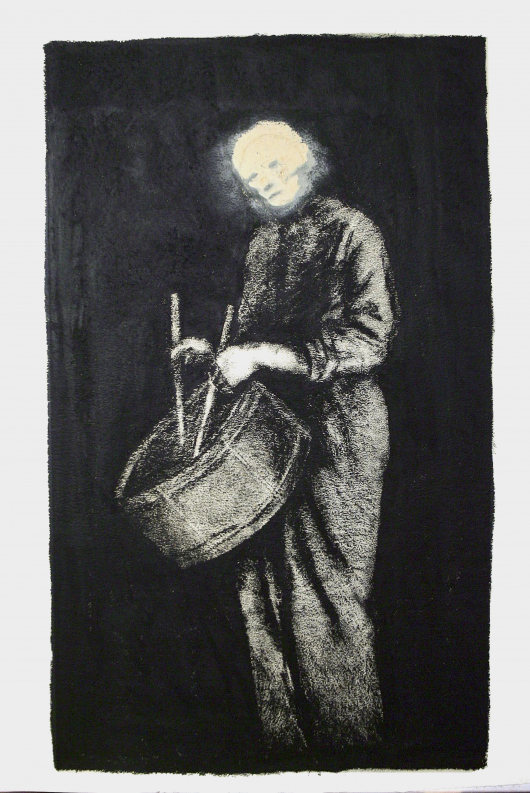
Juan Munoz (Spain) – “Sin título”, 1995, oil on paper and canvas, 197 × 133 cm © photo: Juan Muñoz & Galerie Feuerle

Jenny Saville (U.K.) – “Study for Pentimenti IV (After Michelangelo's “Virgin and Child”)”, 2011, charcoal and pastel on paper, 197 × 147 cm © photo: Jenny Saville & Gagosian Gallery
Where do you buy artworks?
I believe the best place to learn more about the art world are galleries, exhibition spaces and museums for the curatorial role they play. Fairs allow you to discover new artists but online is very efficient and useful for searching artists and galleries. Almost 90% of our acquisitions are in the primary market, mainly in galleries, both in their physical spaces and in fairs around the world. When an artist do not have a gallery, we buy directly from him/her. We are firmly defenders of the fundamental role that galleries play within the art system. 10% of the collection was bought on the secondary market, mainly in international auctions.
The importance of social media for learning about trends, artists and your purchases?
Most of research of new, emerging artists and their galleries, we do online. Later on during art trips we personally visit the galleries. Direct contact will never be replaced by online. In this sense, the web on one hand has made things easier but on the other hand has complicated them, as competition for the same work has increased and with it the price for certain artists, as information is available to everyone in our global world.
For the auction market, I prefer the spectacular catalogs one received each fall and spring from Christie's, Sotherby's or Phillip's, at auctions in New York, London and from national auctions. In 1993 we began to acquire works at international auctions, and since 1998 most of the acquisitions at auction have been made without physically seeing the pieces. Somehow, virtual visits existed as early as the 20th century, through the catalogs that were published.
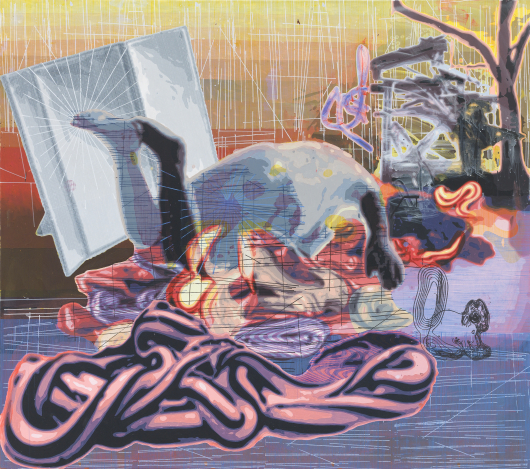
Markus Oehlen (Germany) – “Untitled”, 2013, acrylic on canvas, 200 × 230 cm © photo: Markus Oehlen & Galerie Bärbel Grässlin
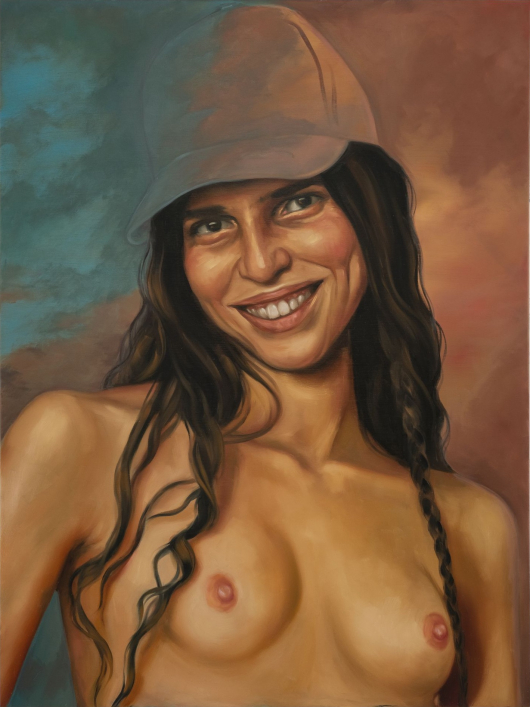
Chloe Wise (U.S.A.) – “Tender contempt”, 2022, oil on linen, 122 × 91 cm © photo: Chloe Wise & Almine Rech Gallery
The most recent purchases
In Brussels, during our visit to Art Brussels 2023, we acquired the work “Clean up your mess”, 2023, oil on canvas, 150 × 200 cm, from the “Schwanzwald” exhibition by the German artist Willehad Eilers (Harlan Levey Projects).
At CAN Ibiza in July 2023 from Luis Adelantado Gallery, the work "Kurión," 2023, oil on canvas, 190 × 145 cm, by Spanish artist Javier Palacios.
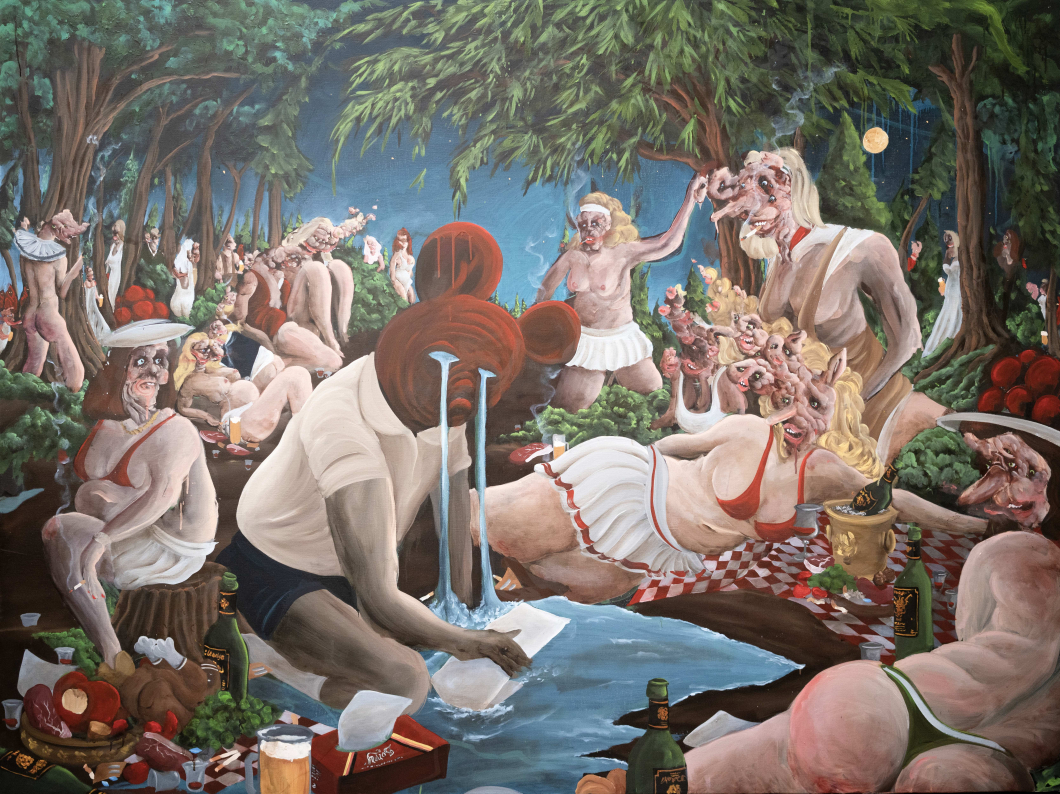
Willehad Eilers (Germany) – “Clean up your mess”, 2023, oil on canvas, 150 × 200 cm © photo: Willehad Eilers & Harlan Levey Projects
Do you support emerging Spanish art?
We give special attention to the search of emerging artists around the world and, of course, also Spanish artists such as David Oliver (Grip Face), Imon Boy, Sebas Velasco, GVIIIE, Alfonso del Moral or Didi Leona.
Since 2021 we have been awarding an Acquisition Prize at the UVNT (Urvanity) fair, the first edition was awarded to Imon Boy for the art work Bostezo. The fair takes place in Madrid in parallel with the Arco Madrid contemporary art fair and, in 2023, concluded its seventh edition.
We want to help support a fresh, young fair with an international vocation to make each edition stronger and with more interesting work.
In the projects we develop to give visibility to the MER Collection, we are very interested in young people, who will be the visitors and potential collectors of tomorrow.
The founders of the MER Collection (Elena Rueda - 84 years old - and Marcos Martín - who passed away in June 2022 at the age of 93) have always remained profoundly young, and their spirit has always been to collect works from the " now and here" trying to maintain their attitude to the contemporary with a clear international vocation. As a second generation, we want to continue on this path.
In choosing the winner of the Acquisition Prize we consider the youthfulness and international vocation of both the artist and the gallery.
The MER Foundation is also working on the development in Segovia of an artistic residency program with a distinct international character that will welcome international scholars and, in the future, allow the awarding of grants to national artists so that they can broaden their horizons.
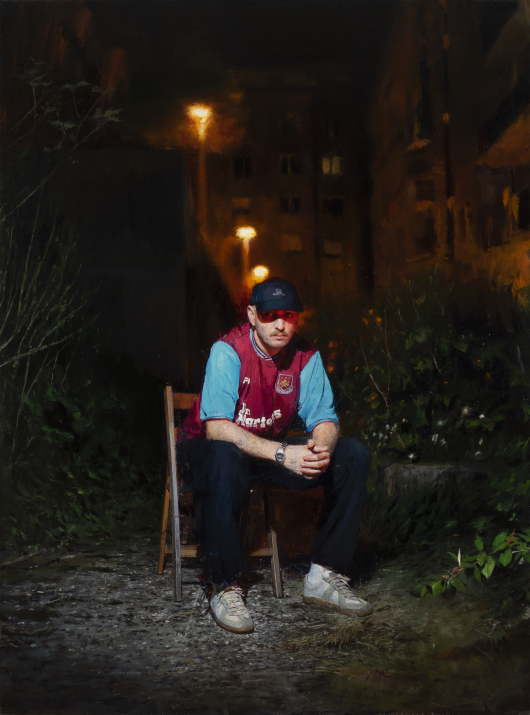
Sebas Velasco (Spain) – “Wasted year II”, 2021, oil on canvas, 162 × 120 cm © photo: Sebas Velasco & SC Gallery
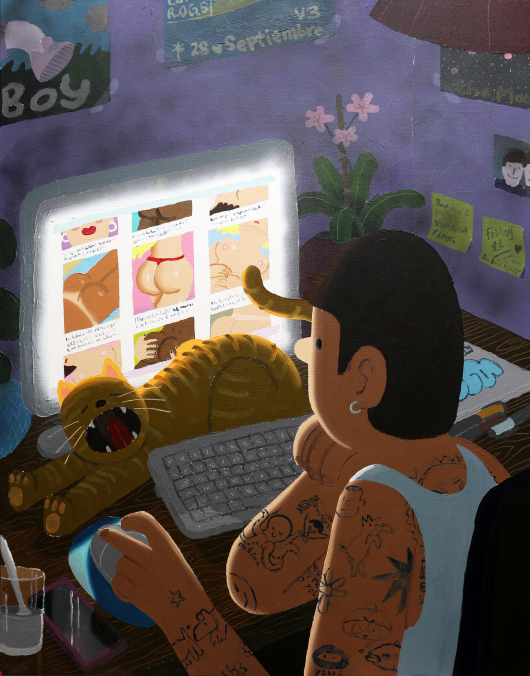
IMON BOY (Spain) – “Bostezo”, 2021, acrylic on canvas, 114 × 90 cm © photo: Imon Boy & La Causa Galeria
How do you enrich the collection?
We continue to acquire new works so that the collection remains contemporary, international and vibrant. This is done mainly through the sale of works that are not essential to the MER Collection core. In this way since 2009, we have been able to improve the collection and refine it with new acquisitions.
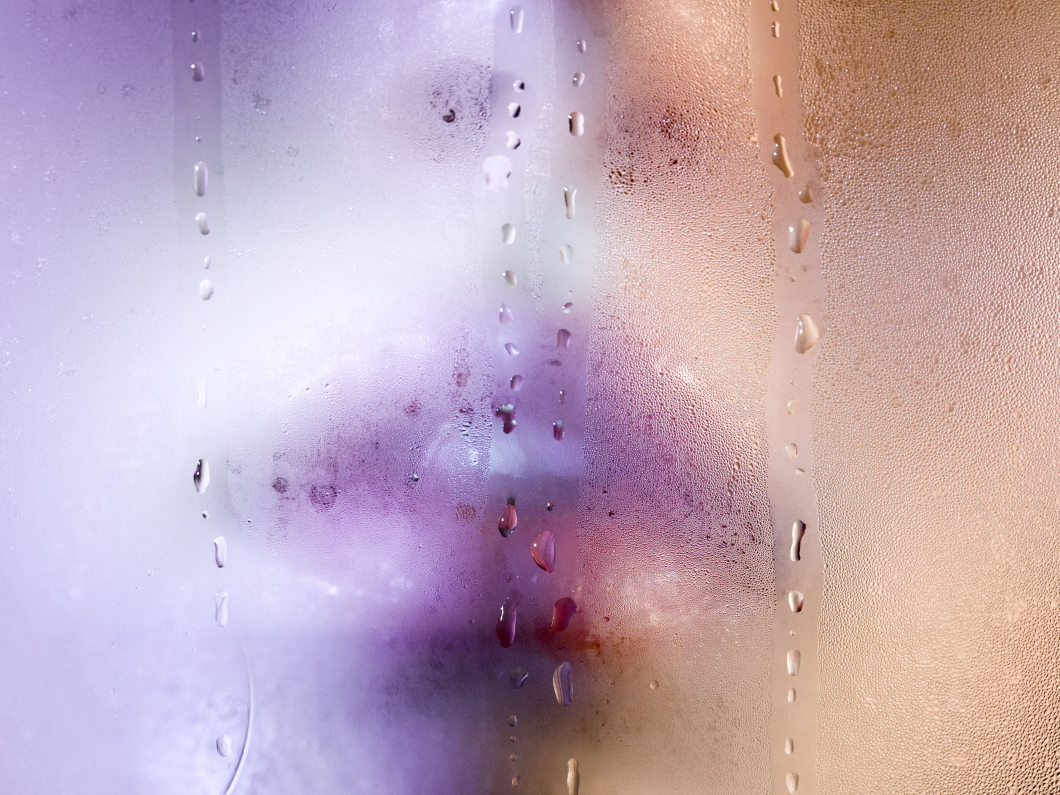
Marilyn Minter (U.S.A.) – “Rose”, 2017, c-print on paper (AP 2, edition of 3, 2 APs), 163 × 218 cm © photo: Marilyn Minter & Salon 94
The missed purchase: for what reason
Ángela de la Cruz's work "Larger than live (Knackered)," 2004, oil and acrylic on canvas, 260 x 400 x 1050 (approx.).
This work was offered me on excellent financial terms, both by Lisson Gallery in London and by the artist herself, with whom we have a very good personal relationship, who wanted her work to be part of the MER Collection. It was undoubtedly Ángela's most monumental and complete work. This purchase option occurred when the house-museum project was in its infancy and it made sense to purchase it by providing an exhibition space in which to place it. In the end we purchased the equally monumental work an oil non canvas entitled "Reach (Brown) Two Parts," 2002.
Five artists on your wish list.
We would love to have works by Jenna Gribbon, Kyle Dunn, Imon Boy, Cesar Piette, Danica Lundy, Salman Toor, Christian Rex Van Minnen, or Danielle Roberts in the collection.
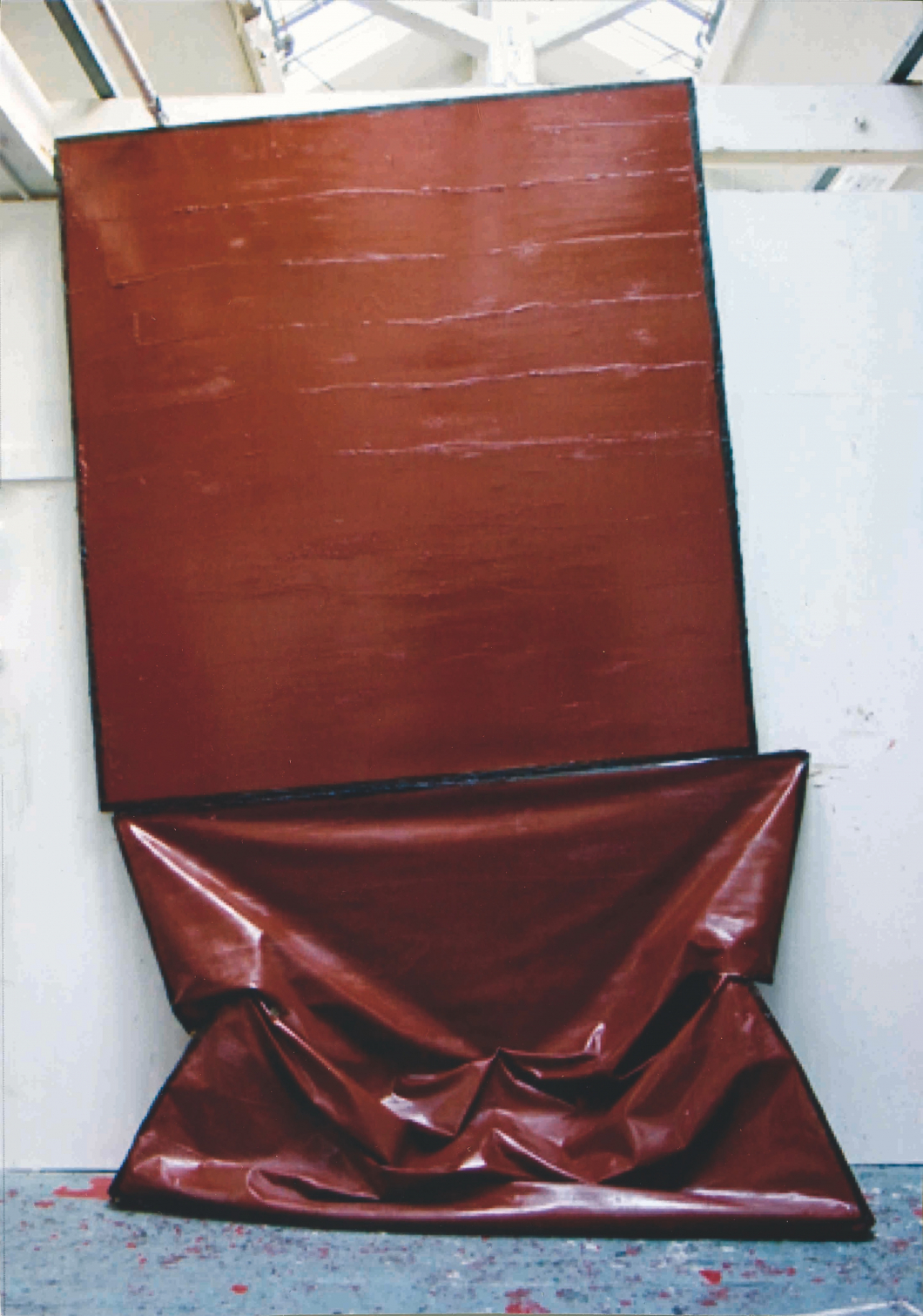
Ángela de la CRUZ (Spagna) – “Reach (Brown) Two Parts”, 2002, oil on canvas, 347 × 237 × 45 cm © photo: Ángela de la Cruz & Lisson Gallery
Do you like to meet the artists you collect?
Yes, but not necessarily for the story behind the painting, but for the possibility of sharing another way of seeing things, not just their painting. Artists, writers, thinkers, ... and their culture always broaden your horizons. Seeing an exhibition, a fair or the MER Collection itself through the eyes of another person, makes you see it in another way and you realize things you hadn't noticed before. And the eyes of an artist are particularly interesting.
Among contemporary artists who would you like to invite to dinner?
In September 2021, Eduardo and I attended the opening in Florence of the exhibition dedicated to the artist Jenny Saville, in dialogue with Michelangelo's masterpieces, which took place in five monumental spaces in town. We attended the opening dinner, greeting the artist and leaving her a book from the MER Collection, but without having a chance to talk to her. Among her three works in the collection, we lent, by the artist's choice, 'Study for Pentimenti IV (After Michelangelo's "Virgin and Child")', 2011, charcoal and pastel on paper. Jenny is one of the living artists I know. She paints with the utmost perfection and takes you into the great classics with a contemporary perspective.
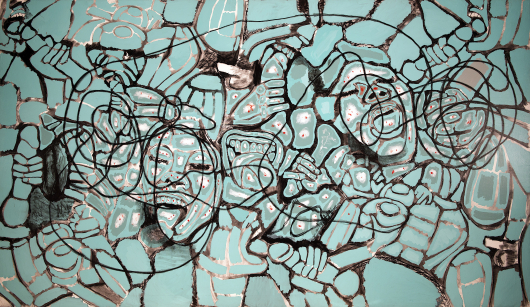
Luis Gordillo (Spain) – “Carnivorando 2”, 1995, acrylic on canvas, 157 × 270 cm © photo: Eduardo Domenech Serrano
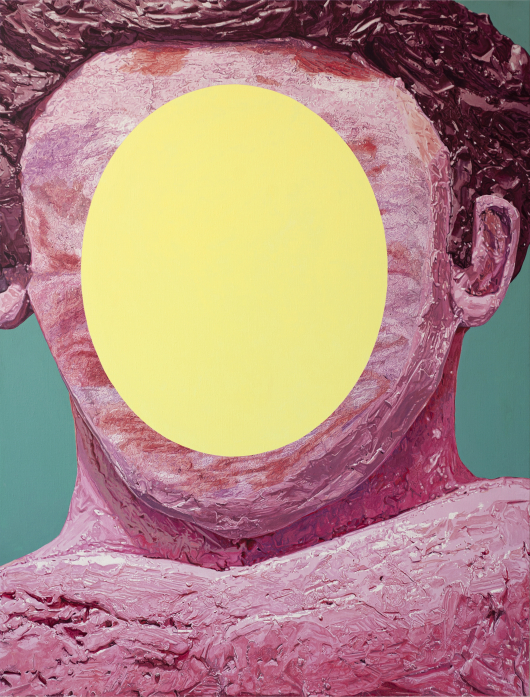
Javier Palacios (Spain) – “Kurión”, 2023, oil on canvas, 190 × 145 cm © photo: Javier Palacios & Galería Luis Adelantado
Among the players in the art world that you have met, who has most appealed to you?
Although I did not know them personally, I certainly liked the American millionaire and collector couple Dorothy and Herb Vogel. Dorothy was a librarian and Herb worked in a post office. Since they married in 1962, they have used Herb's salary to buy art and Dorothy's to pay rent and other household expenses. In 1992, they catalogued their collection of over four thousand works of art, which was donated to the National Gallery and, as it was impossible for the museum to accommodate all the works, was also donated to other museums in different American states.
The moral of the story: art is accessible to anyone who wants it. It is difficult and requires time, but it is not impossible, it is not just for the great élite, nor for the contemporary art scholar. Simply, as Herb said, it has to be enjoyed.
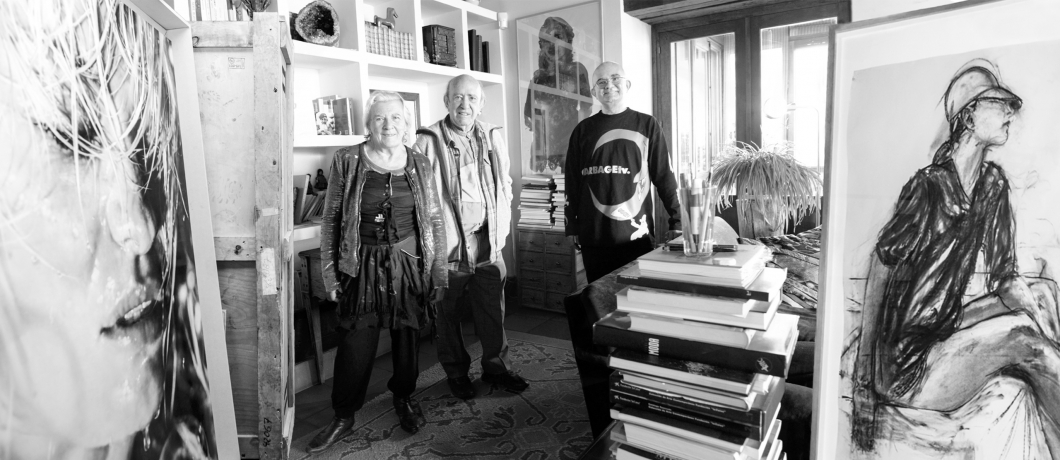
Founder of Colección MER (initials of Marcos, Elena and their son Rafael)